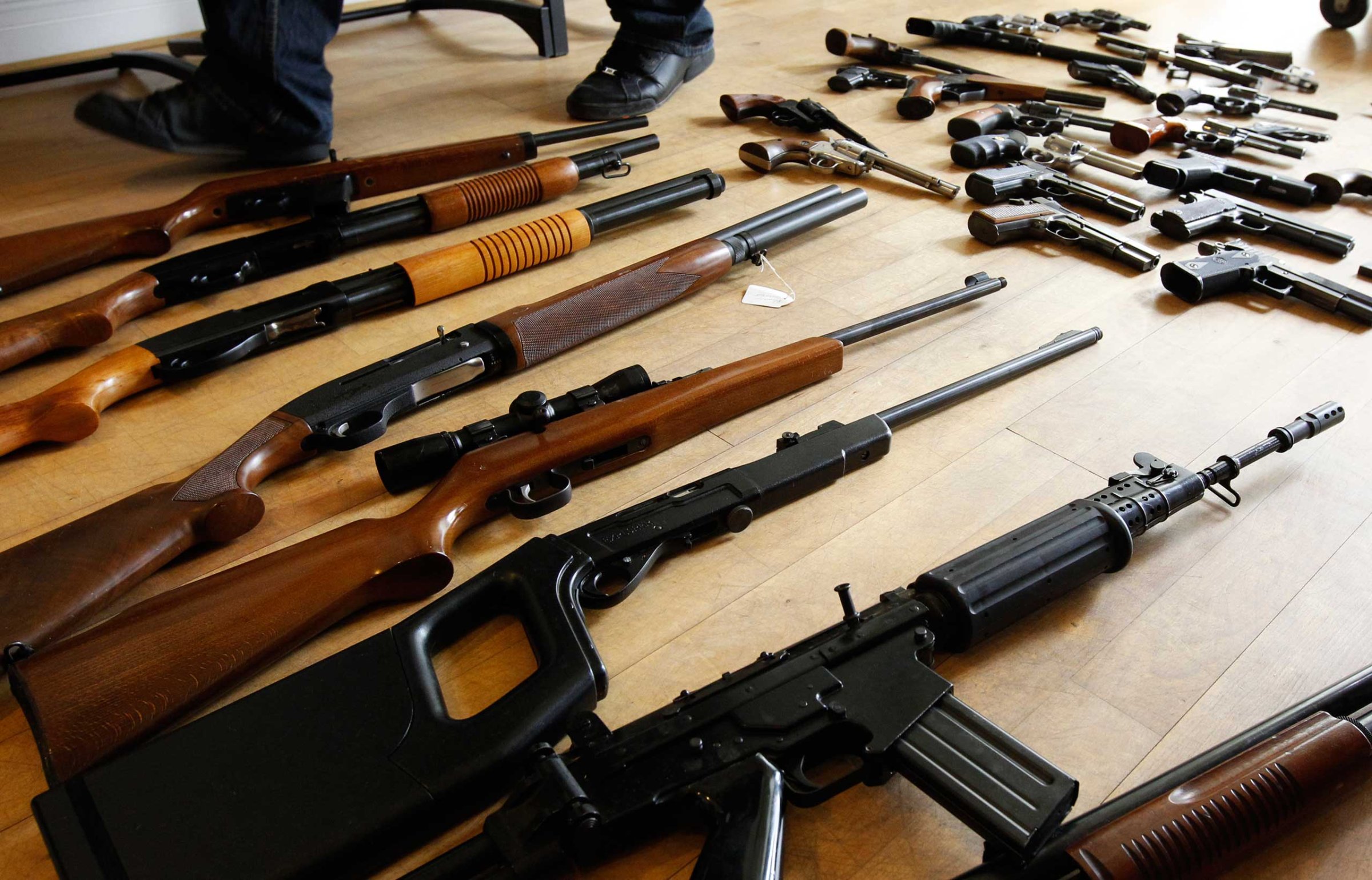
When Chérif and Saïd Kouachi attacked the offices of Charlie Hebdo on Jan. 7, killing 12 people, they were armed with Kalashnikov assault rifles and could easily outgun the police officers who tried to apprehend them with pistols. Their associate, Amedy Coulibaly, had an even greater collection of military-grade weapons.
The size of the trio’s armory has prompted an urgent inquiry into the scale of gun smuggling in Europe, where weapons are smuggled into the European Union from the countries of former Yugoslavia, Albania and elsewhere and then moved without any further border checks to where they will get the best price. Most of the smuggling is carried out by criminal gangs but many jihadists such as Coulibaly are well connected with criminal networks.
Despite the Paris attacks, it seems the weapons are still flowing freely through Europe. Brian Donald, chief of staff for Europol, which coordinates cross-border actions among police forces in the E.U.’s 28 countries, says there have been two “large seizures” of assault weapons in Europe during the past two weeks, but would not give details about where they were, since the investigations were still ongoing. In all, he says police had seized “several vanloads of 30 or 40 weapons at a time,” during the past few weeks, including “AK-47s, Scorpions, handguns and semiautomatic rifles.”
The Kouachis had rifles and a rocket-propelled grenade launcher. On Jan. 8, Coulibaly fatally shot a policewoman with a Scorpion submachine gun in the Paris suburb of Montrouge. The day after that, he used a 7.62-mm Tokarev rifle, a Soviet-designed weapon, to kill five hostages in a kosher supermarket in eastern Paris. His posthumous video also showed him with a Kalashnikov AK-47. Earlier this month, a Belgian newspaper reported that Coulibaly had bought most of the weapons from a Belgian criminal for €5,000 (about $5,647). Coulibaly, a French-born Muslim with Malian parents, made the deal near the Brussels Midi train station, a major railway hub that connects Western Europe’s biggest cities, after taking out a €6,000 loan from the French financial services firm Cofidis using false information about his income, which went unchecked.
But although the police quickly traced the weapons source in the Paris attacks, stopping criminals and other jihadist cells in Europe from acquiring assault weapons for further attacks might not be so easy, according to police officials.
Many of the weapons circulating in Europe hail from southeastern Europe, where big military arsenals were left abandoned during the collapse of Yugoslavia and the Balkan wars of the 1990s. At least a million other weapons are believed to have been looted during an outbreak of anarchy in Albania in 1997. “There are stockpiles in the Balkans of 2 [million] to 3 million [weapons] left over from the 1990s, available for recycling,” says Donald.
French police believe rifles are on sale in French cities for between €1,000 and €1,500. Earlier this month, Philippe Capon, head of the French police union UNSA, told Bloomberg News, “The French black market for weapons has been inundated with eastern European war artillery and arms.” A French police source told TIME that the weapons from the Charlie Hebdo attack came from the Balkans.
That is not the only source of weaponry. Donald says he fears that the continent might be facing a fresh influx of weapons from North Africa in the wake of the Arab Spring revolts. In August, 2011, Libyan rebels looted large quantities of mortars, tank shells and other munitions when Moammar Gaddafi’s regime collapsed. Although most of those weapons are believed to have filtered across North and West Africa, some could also have made their way to Europe.
The arms traffickers have flourished in the absence of well-financed antiweapons units in Europe, where law enforcement has for years tended to plow money into stopping drug-dealing and other crimes. “We don’t fully understand the scale of the problem because we have not had specialized units,” says Donald, referring to law-enforcement agencies in different E.U. countries. “It is a question of priorities. Any police officer will tell you it [resources] is a constant struggle.”
The trade in illegal weapons can earn enormous profits for organized criminal gangs — enough to make the risk of capture worthwhile. Donald says recent investigations have found arms traffickers investing about €30,000 in a shipment of Balkan-era weapons, refurbishing them in their garages, then selling them for them for about 10 times the price. “That’s a huge mark-up,” he says.
As Europe struggles to crack down on illegal weapons, some police recruits face a new training exercise: Go buy a Kalashnikov rifle. Donald says that in “a city in Europe,” which he would not name, “very young officers with no training or experience” were recently told to go find an assault weapon on the streets from an illegal arms dealer. “One came back two hours later with an AK-47,” Donald says. “He bought it for €1,000.”
More Must-Reads from TIME
- Why Trump’s Message Worked on Latino Men
- What Trump’s Win Could Mean for Housing
- The 100 Must-Read Books of 2024
- Sleep Doctors Share the 1 Tip That’s Changed Their Lives
- Column: Let’s Bring Back Romance
- What It’s Like to Have Long COVID As a Kid
- FX’s Say Nothing Is the Must-Watch Political Thriller of 2024
- Merle Bombardieri Is Helping People Make the Baby Decision
Contact us at letters@time.com